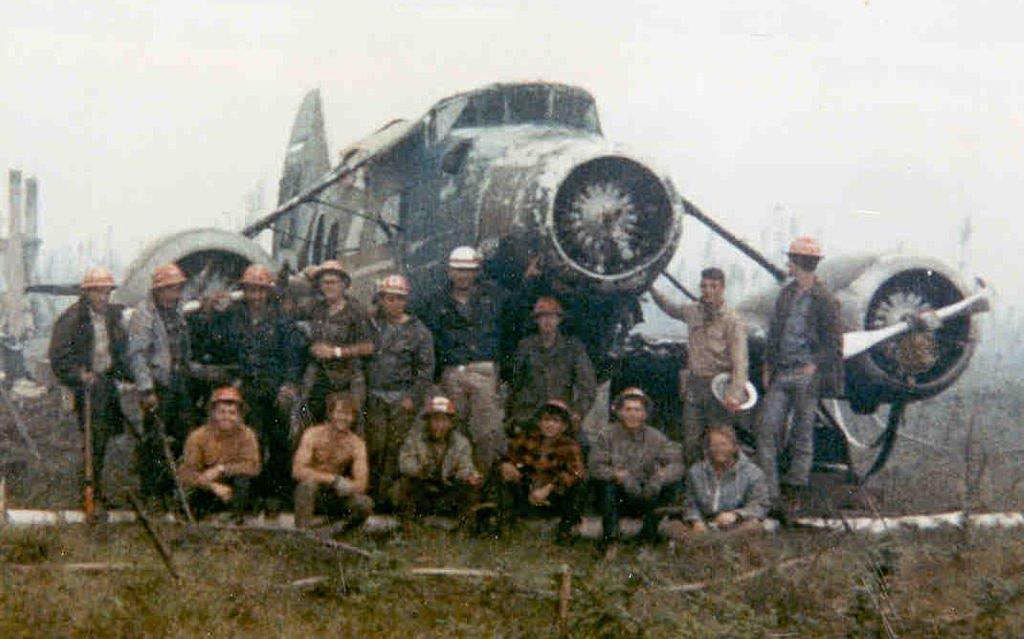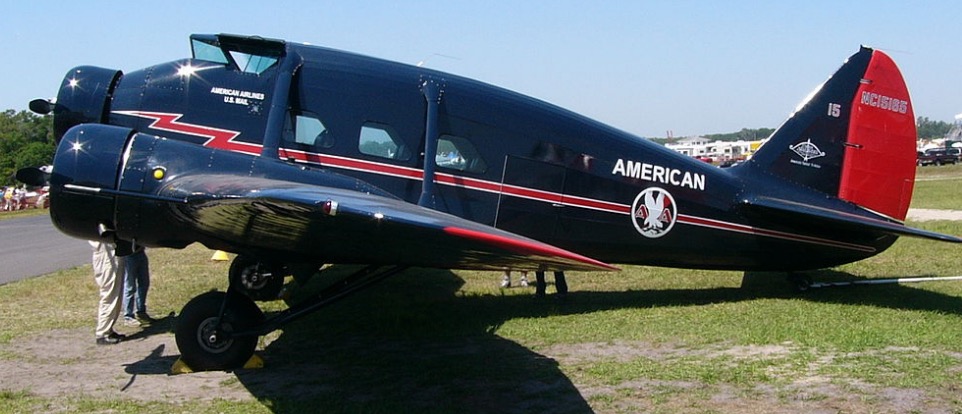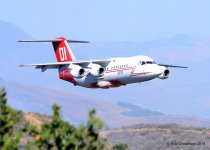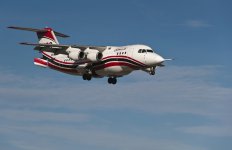Daveroo
Members +
<header class="entry-header" style="box-sizing: inherit; margin-right: 0px; margin-left: 0px; color: rgb(26, 26, 26); font-family: Merriweather, Georgia, serif; font-size: 16px; line-height: 28px; background-color: rgb(252, 252, 252);">[h=1]Firefighters in 1968 saved the last Stinson A Trimotor from an approaching wildfire[/h]</header>

Above: Bureau of Land Management wildland firefighters in Alaska pose in 1968 with the Stinson A Trimotor aircraft that they protected from a wildfire. Photo provided by Doug Lutz and used with permission.
This article first appeared on Wildfire Today.
In 1968 Doug Lutz and three of his companions left their jobs at Glacier National Park in Montana to “seek fame and fortune in Alaska”. They got hired by the Bureau of Land Management as wildland firefighters and were soon put to work on a wildfire within sight of Mt. McKinley. They only had hand tools, since at the time the logistics of providing gasoline for chain saws in the remote tundra was difficult, Mr. Lutz said.
With 15 of his co-workers, he volunteered for an assignment to protect a very unique aircraft from an approaching wildfire. It was the last Stinson A Trimotor in existence at that time, NC15165, one of only 31 or 32 that were built. It crashed in 1947 and J. D. “Red” Berry had been trying off and on since 1964 to get it out of the tundra.
Below is an excerpt from an article at Disciples of Flight written by Mr. Lutz, used here with his permission:
By the early 1970s J.D. “Red” Berry, who had acquired the rights to the Stinson in 1964, retrieved the aircraft and sold it to Eugene Coppock. Mr. Coppock rebuilt it and had it flying again in 1979. The Alaska Aviation Heritage Museum purchased it in 1988 and ten years later sold it to Greg Herrick’s Golden Wings Museum at Blaine Airport in Minnesota, who restored it. H.O Aircraft took on that job which required taking the aircraft COMPLETELY APART down to the frame, portions of which had to be fabricated and replaced.
<figure id="attachment_47975" class="wp-caption aligncenter below-entry-meta" style="box-sizing: inherit; margin: 0px 0px 1.75em -240px; clear: both; max-width: 140%; float: none;"> <figcaption class="wp-caption-text" style="box-sizing: inherit; color: rgb(104, 104, 104); font-size: 0.8125rem; font-style: italic; line-height: 1.61538; padding-top: 0.538462em;">The restored Stenson A Trimotor. Photo by Ahunt at Sun ‘n Fun 2006 in Lakeland, Florida.</figcaption></figure>Mr. Lutz gave us some additional information about the Stenson A Trimotor:
<figcaption class="wp-caption-text" style="box-sizing: inherit; color: rgb(104, 104, 104); font-size: 0.8125rem; font-style: italic; line-height: 1.61538; padding-top: 0.538462em;">The restored Stenson A Trimotor. Photo by Ahunt at Sun ‘n Fun 2006 in Lakeland, Florida.</figcaption></figure>Mr. Lutz gave us some additional information about the Stenson A Trimotor:

Above: Bureau of Land Management wildland firefighters in Alaska pose in 1968 with the Stinson A Trimotor aircraft that they protected from a wildfire. Photo provided by Doug Lutz and used with permission.
This article first appeared on Wildfire Today.
In 1968 Doug Lutz and three of his companions left their jobs at Glacier National Park in Montana to “seek fame and fortune in Alaska”. They got hired by the Bureau of Land Management as wildland firefighters and were soon put to work on a wildfire within sight of Mt. McKinley. They only had hand tools, since at the time the logistics of providing gasoline for chain saws in the remote tundra was difficult, Mr. Lutz said.
With 15 of his co-workers, he volunteered for an assignment to protect a very unique aircraft from an approaching wildfire. It was the last Stinson A Trimotor in existence at that time, NC15165, one of only 31 or 32 that were built. It crashed in 1947 and J. D. “Red” Berry had been trying off and on since 1964 to get it out of the tundra.
Below is an excerpt from an article at Disciples of Flight written by Mr. Lutz, used here with his permission:
…[On] August 11, a helicopter set our crew of sixteen men down near the Stinson Trimotor somewhere near the Toklat and Kantishna Rivers to prepare for the oncoming fire. We figured we had about 24 hours to dig a fire line down to permafrost, cut the existing trees down, drag them to the outside of the fire line, and back-burn the fuel before the fire hit. We worked feverishly to prepare for the onslaught, resting only when we dropped from exhaustion. I marveled at the very reason for our task, as the Stinson Trimotor, partially dismantled, was the most incredible aircraft I had ever seen. The interior appeared to be in excellent condition and with a little imagination, it was easy to imagine what a splendid machine it was in its prime.
We thought we were pretty well prepared as the fire reached an old CAT a mile or two away that we were told had broken down trying to get the Stinson out sometime before. With a great explosion of the fuel drums, we knew our time was near. As the front hit us, the incredible heat, smoke, and wind generated by Z-83 (the BLM fire designation) defied comprehension and lies in my memory as the most vivid reminder of my insignificance in the grand plan of things. As an 18-year old boy, the next few days would transform me into a man with a little greater appreciation for life.
The only thing we could do with the fire was to constantly walk around the fire line and put out any spot fires that may have jumped. The smoke was so intense that the only way one could breathe was to drop to the ground, put your face on the tundra, and breathe the air pockets. Visibility was nil and the heat incredible. Thank God for Visine! We ran out of food on about the third day, drinking water was nearly gone, and our radio to the outside broke down. We were later told that BLM headquarters had pretty much given us up for lost and were contemplating notifying next of kin. Needless to say, we survived, but it certainly was no picnic. I recall having a rousing game of poker inside the Stinson A, although just being alive was the biggest jackpot we could think of at the time.
[…]
A snapshot was taken on the fourth day, August 14, by one of the guys who sent me a small print later that fall. The most vivid picture, however, resides only in my mind as the helicopter raised up to take us home. The two acres or so within the fire line was resplendent green, and as far as you could see in every direction was starkly black. And the Stinson Trimotor sitting in the center of the green circle, looking so proud and incredibly alive, remains as one of the most significant and indelible images of my life…
Mr. Lutz is in the photo above, in the bottom row, second from the right. He said the photo was taken by a member of the helicopter rescue crew with, he believes, Terry Wheeler’s camera.We thought we were pretty well prepared as the fire reached an old CAT a mile or two away that we were told had broken down trying to get the Stinson out sometime before. With a great explosion of the fuel drums, we knew our time was near. As the front hit us, the incredible heat, smoke, and wind generated by Z-83 (the BLM fire designation) defied comprehension and lies in my memory as the most vivid reminder of my insignificance in the grand plan of things. As an 18-year old boy, the next few days would transform me into a man with a little greater appreciation for life.
The only thing we could do with the fire was to constantly walk around the fire line and put out any spot fires that may have jumped. The smoke was so intense that the only way one could breathe was to drop to the ground, put your face on the tundra, and breathe the air pockets. Visibility was nil and the heat incredible. Thank God for Visine! We ran out of food on about the third day, drinking water was nearly gone, and our radio to the outside broke down. We were later told that BLM headquarters had pretty much given us up for lost and were contemplating notifying next of kin. Needless to say, we survived, but it certainly was no picnic. I recall having a rousing game of poker inside the Stinson A, although just being alive was the biggest jackpot we could think of at the time.
[…]
A snapshot was taken on the fourth day, August 14, by one of the guys who sent me a small print later that fall. The most vivid picture, however, resides only in my mind as the helicopter raised up to take us home. The two acres or so within the fire line was resplendent green, and as far as you could see in every direction was starkly black. And the Stinson Trimotor sitting in the center of the green circle, looking so proud and incredibly alive, remains as one of the most significant and indelible images of my life…
By the early 1970s J.D. “Red” Berry, who had acquired the rights to the Stinson in 1964, retrieved the aircraft and sold it to Eugene Coppock. Mr. Coppock rebuilt it and had it flying again in 1979. The Alaska Aviation Heritage Museum purchased it in 1988 and ten years later sold it to Greg Herrick’s Golden Wings Museum at Blaine Airport in Minnesota, who restored it. H.O Aircraft took on that job which required taking the aircraft COMPLETELY APART down to the frame, portions of which had to be fabricated and replaced.
<figure id="attachment_47975" class="wp-caption aligncenter below-entry-meta" style="box-sizing: inherit; margin: 0px 0px 1.75em -240px; clear: both; max-width: 140%; float: none;">
 <figcaption class="wp-caption-text" style="box-sizing: inherit; color: rgb(104, 104, 104); font-size: 0.8125rem; font-style: italic; line-height: 1.61538; padding-top: 0.538462em;">The restored Stenson A Trimotor. Photo by Ahunt at Sun ‘n Fun 2006 in Lakeland, Florida.</figcaption></figure>Mr. Lutz gave us some additional information about the Stenson A Trimotor:
<figcaption class="wp-caption-text" style="box-sizing: inherit; color: rgb(104, 104, 104); font-size: 0.8125rem; font-style: italic; line-height: 1.61538; padding-top: 0.538462em;">The restored Stenson A Trimotor. Photo by Ahunt at Sun ‘n Fun 2006 in Lakeland, Florida.</figcaption></figure>Mr. Lutz gave us some additional information about the Stenson A Trimotor:Of the 30 or 31 Stinson A’s to be built, they lived a short life as a passenger plane as the DC2 and DC3 soon displaced them. Four of the Stinson A’s made it to Australia and the others were relegated to mail run airmail, although Air India used them commercially. They were perfect for bush pilots in Alaska. NC15165 crashed in 1947 on a mail run and sat there until Red Berry started an incredible journey to get it out of the tundra.
Thanks and a tip of the hat go out to Doug Lutz.



